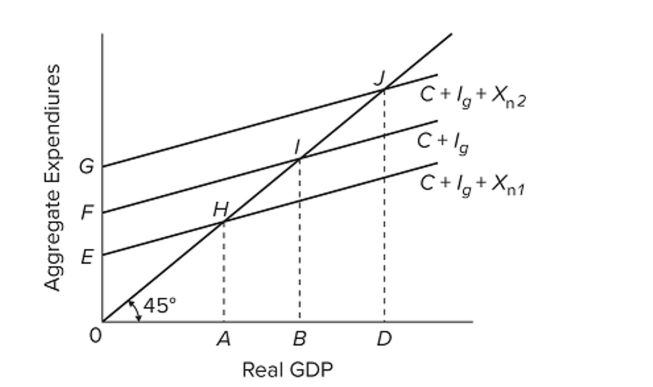Multiple Choice
 Refer to the diagram. The change in aggregate expenditures as shown from to ) will produce
Refer to the diagram. The change in aggregate expenditures as shown from to ) will produce
A) a decrease in real GDP.
B) an in?ationary expenditure gap if 0D is this nation's full-employment level of GDP.
C) an increase in real GDP if 0A is this nation's full-employment level of GDP.
D) an in?ationary expenditure gap if 0B is this nation's full-employment level of GDP.
Correct Answer:
Verified
Related Questions

